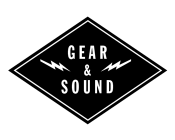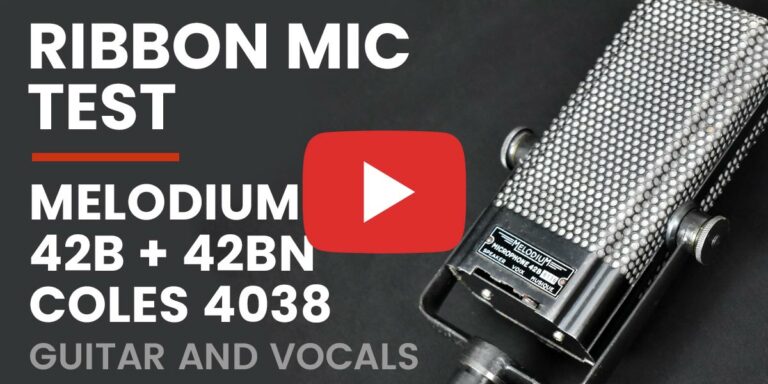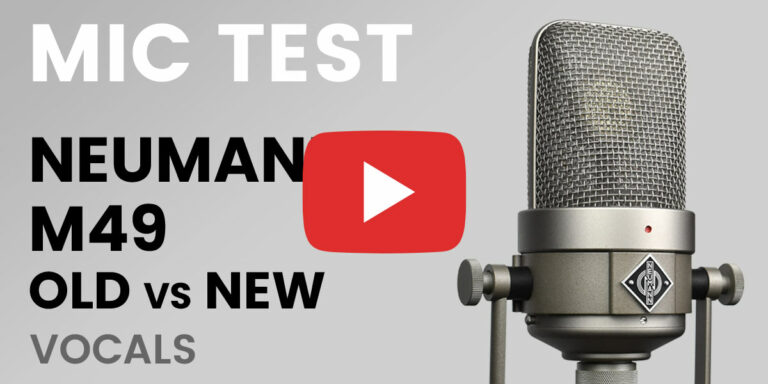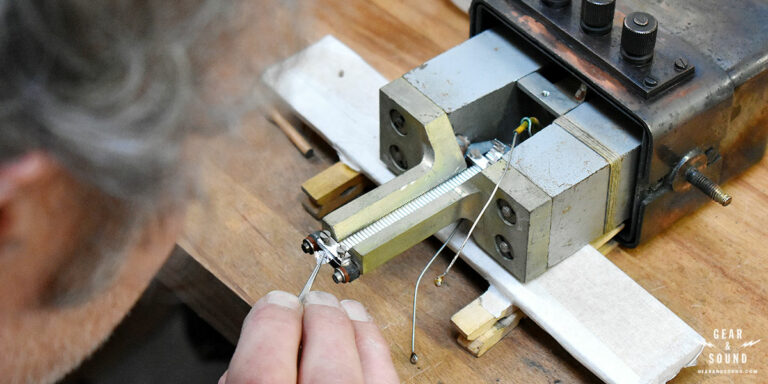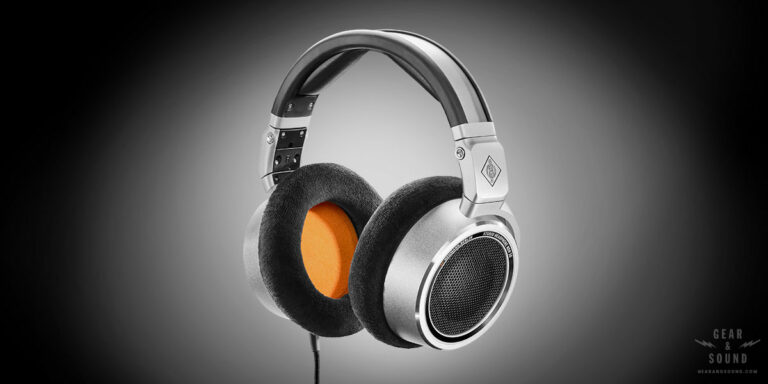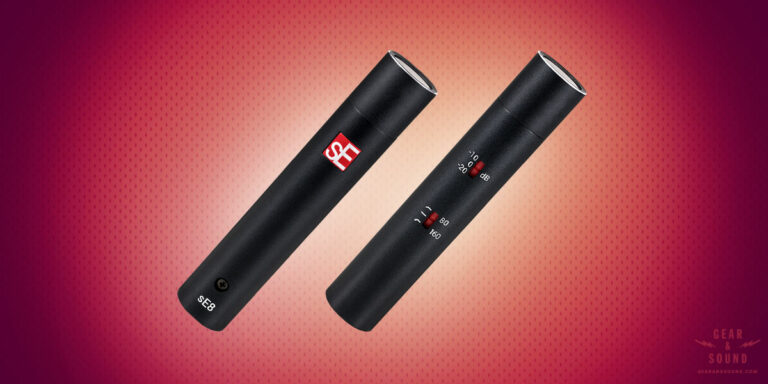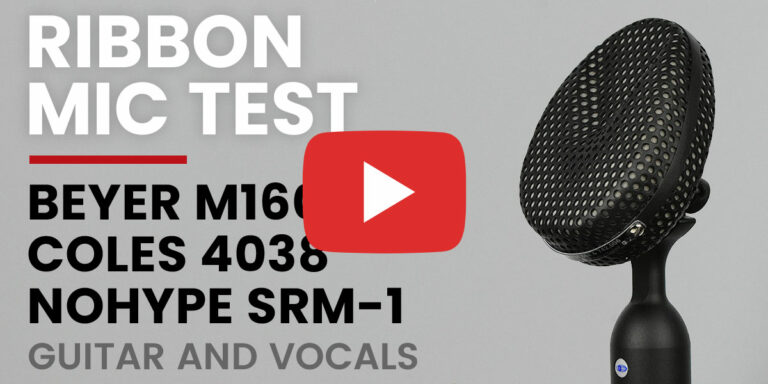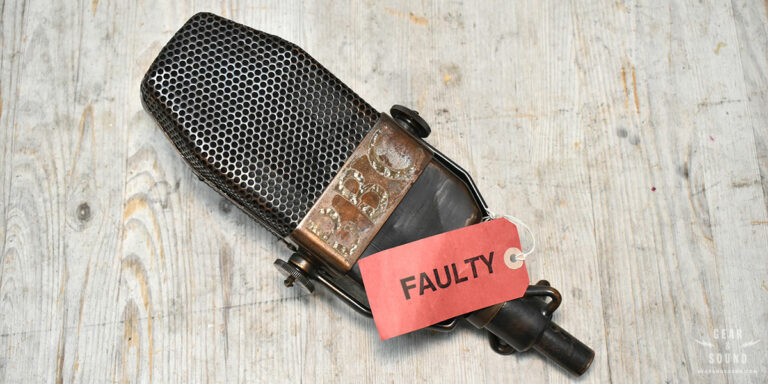What’s so great about using a stereo ribbon microphone?
1. A stereo ribbon mic reduces phasing issues
Compared to two individual mics, a stereo ribbon will cause hardly any phasing issue. That means the performer can move his head and instrument without affecting the sound unpleasantly. If you try the same with two individual microphones, the sound will constantly change with every movement due to phasing problems.
2. A stereo ribbon mic offers very good channel separation
Additionally, this technique takes advantage of the typical cancellation of sound at 90 degrees, a phenomenon that occurs in bi-directional ribbon mics. That means they reject the sound arriving at a 90-degree angle on the left and right sides of the microphone. You can see this in the video above: the ribbon channel that points to the guitar cancels out the vocals.
It almost sounds as if the singer was meters away from the microphone. On the other hand, the channel that points to the vocals reduces the guitar’s sound. Which leads to the next advantage.

3. You’ll have more possibilities during mixing
Such a great separation of guitar and vocals offers many possibilities during mixing. You can dial in the perfect balance regarding the volume of each channel. On top of it, you can treat each of them with individual EQ settings or even effects.
4. Most ribbon mics have a constant polar pattern through all frequencies
Finally, another significant advantage of ribbon microphones is their figure-of-8 pattern which is (most of the time) very constant throughout the entire frequency spectrum. While condenser microphones alter the sound at certain angles, ribbon mics don’t change their sound. For example: if you take a directional large diaphragm condenser microphone and change the angle to 60 degrees, the sound will differ significantly compared to 0 degree.
Most of the time, many of the high frequencies will get lost. That’s not the case with ribbon mics. Their sound stays consistent. If you place a source at a greater angle, it only reduces the overall sound.
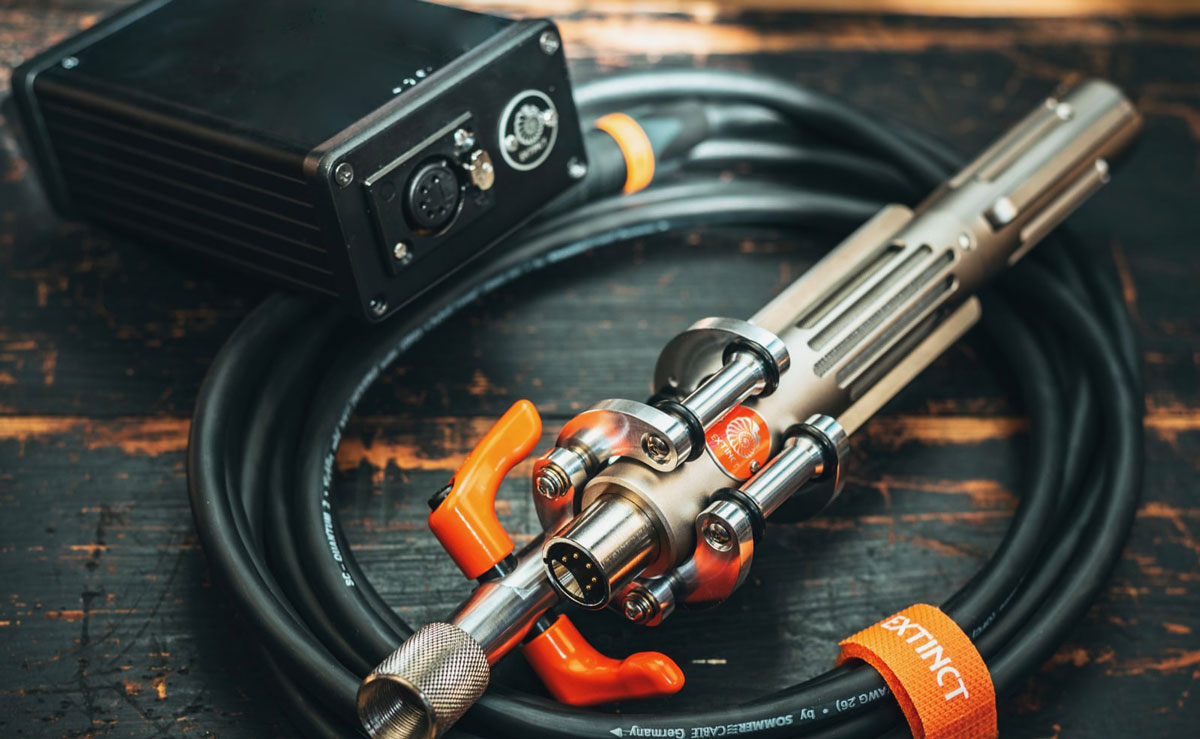
5. A stereo ribbon is easy to set up
A stereo ribbon mic can be very easy to set up. First, you’ll only need one mic stand. Therefore, the artist is free to move around and can focus on her/his performance. You also don’t need to measure distances from the mic to the mouth or to the instrument. Stereo ribbon mics are usually perfectly aligned in a 90 degree angle and spare you all that hassle.
We encourage you to give this technique a try. And if stereo ribbon mics gathered your interest, have a look at the fantastic One Mic Series on Youtube.
Big thanks to singer-songwriter Fabian Holland. If you like his music, check his YouTube channel and Spotify.
